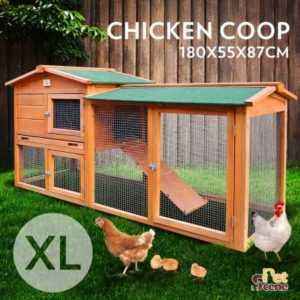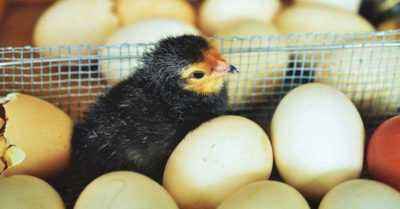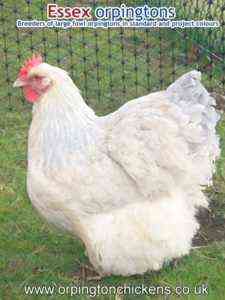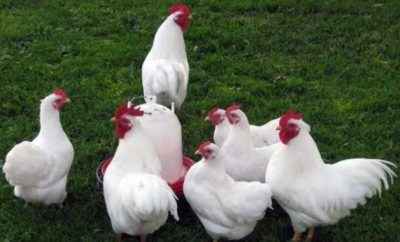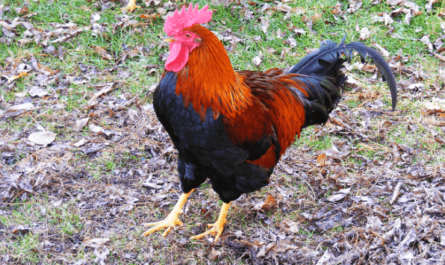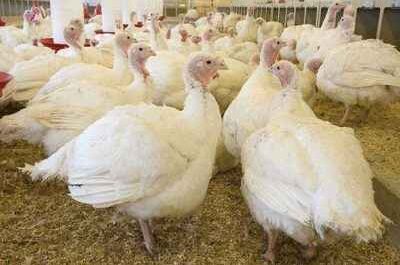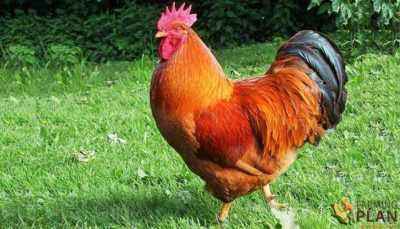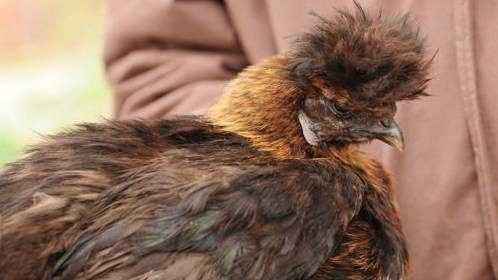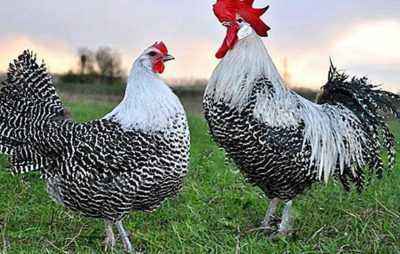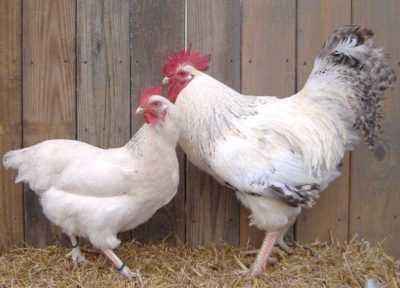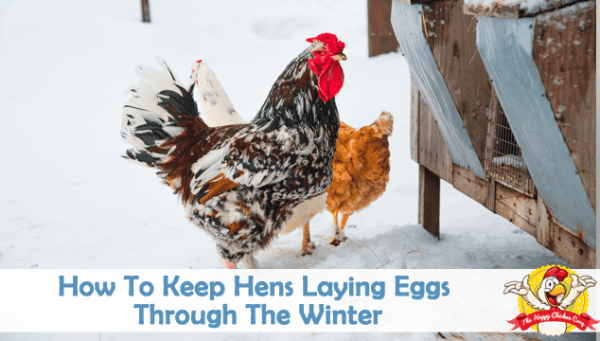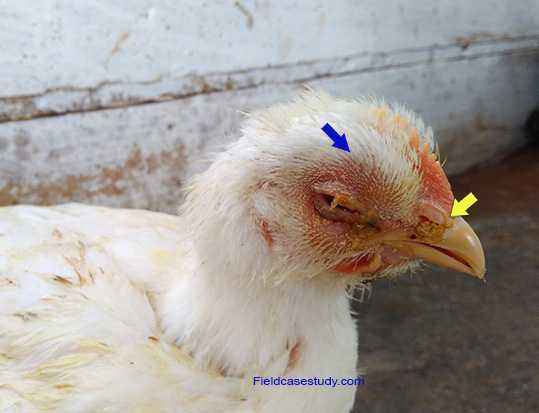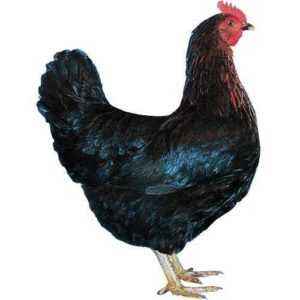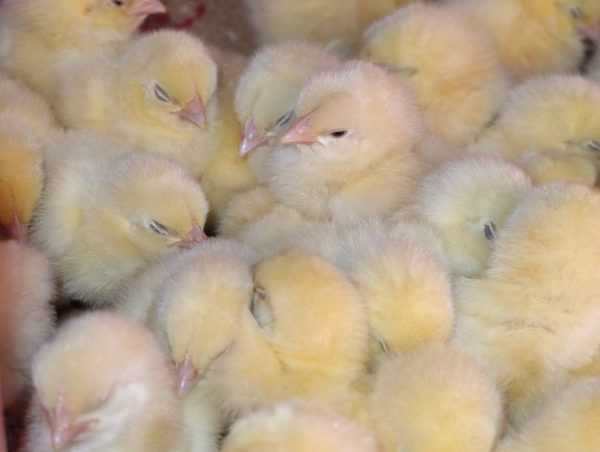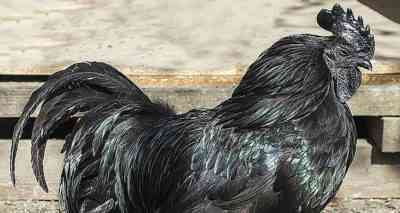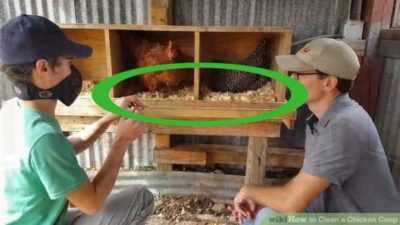As a result of crossing the crosses with meat and egg direction, the breeders of the UAAS and the Research Institute of Borka managed to get a good breeding herd. The newly bred Hercules chicken breed has good body weight, egg production and is characterized by the rapid growth of young animals. Due to such qualities, the breed is widespread throughout Russia.
- Characteristic of the breed
- Likes
- Productivity Indicators
- Cost <
- Advantages and Disadvantages
- Features of care and maintenance
- Chicken house
- Diet
- Walking yard
- Shedding and laying time
- Replacing the herd
- Breeding rules
- Incubation
- Nursing <
- Feeding <
- Infectious diseases
- Typhoidpullorosis <
- Salmonellosis (paratyphoid)
- Colibacteriosis <
- Pasteur llez
- Noncommunicable diseases
- Parasites <
- Prevention
- Owner reviews

Hercules hens
Characteristics of the breed
The description includes several distinctive qualities:
- head of medium size, rounded shape;
- eyes orange;
- the beak is yellow, slightly curved at the tip;
- scallop, leaf-shaped, divided into 4-6 teeth, erect;
- earrings and earlobes red;
- the tail is small, in roosters with long hanging feathers;
- the legs are stocky and yellow;
- has a strong and massive frame with a broad back and chest.
The plumage is diverse, combines several tones – white, black-striped, golden, silver and pockmarked.
Today, hens Hercules is one of the most common breeds in Ukraine and other CIS countries.
Temper
The bird has a calm and peaceful disposition. Hens are good for young animals. Roosters do not show aggression towards the owner and representatives of other breeds, therefore, their joint keeping in one herd is allowed.
Productivity Indicators
Almost all breeders note the high performance of chickens.The following productivity indicators are characteristic of this breed:
- egg production – from 210 to 220 eggs per year;
- at the age of one year, the male, like broilers, reaches 4.2-4, 5 kg of weight, the female is about 3.4 kg;
- eggs are large – average weight is from 65 to 70 g;
- puberty and readiness for egg laying takes 5-6 months of breeding ;
- young growth has good survival – up to 92%, adults – 93-94%.
Cost
Price this breed is quite high – daily chickens cost from 40 to 50 rubles, young growth has grown – 60-100 rubles.
Despite such a high price, birds quickly pay back the investment – with intensive weight gain and the ability to lay eggs already at the age of five months.
Adults cost from 1,200 to 1,500 rubles.
Advantages and disadvantages
The characteristics of the Hercules breed include several advantages that are important for poultry farmers:
- like broilers, they quickly gain mass;
- a calm and peaceful disposition;
- excellent taste of eggs and meat;
- high resistance to many diseases and parasites;
- good tolerance to sudden changes temperature, humidity;
- eggs are large, contain large yolks (occupy 35% of the weight).
One nuance is distinguished from the shortcomings – birds of the second and third generation less productive than their parents.
Care and maintenance features
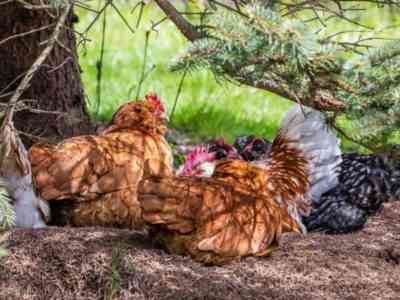
Very stress-resistant hens
One of the main advantages of the breed is its excellent adaptive properties. The bird easily tolerates stressful situations and sudden changes in temperature, without reducing productivity.
Coop
Considering the large size of this breed, this breed requires a lot of space in the house – not one individual less than 50 m³. Chickens do not need perches, because due to the heavy weight, they will not be able to take off on them.
Before starting the livestock in the room, it must be carefully prepared:
- to clean the debris, whiten the walls and floor surface with slaked lime to destroy all bacteria and germs;
- the bottom can be sewn up with boards or tin, covering all cracks and access to penetration by rodents;
- the floor is covered with a thick layer of hay, straw or sawdust – 40 cm in the winter season, in the summer – 10-15 cm;
- the litter is laid on a warm and sunny day so that it stays with hoy;
- in the room they make nests for laying hens in a place that is quiet and inaccessible to roosters and other individuals;
- place feeding troughs at a rate of 4 and 3 cm for each individual, respectively;
- additionally install a basin or other bathing container, fill them with dried clay, sand or ash.
To protect against diseases and parasites, you need to maintain stable heat – in winter 23-25 ° C, in summer about 13 ° C. Regular airing will provide an optimal microclimate in the chicken coop. To do this, open windows or doors every day.
Diet
The health of birds and their productivity largely depends on feeding.
- Throughout years, chickens are given compound feed, which forms the basis of daily feeding at the rate of 120-130 g per individual. You can buy a ready-made composition or cook it yourself by mixing mineral additives, fish and meat and bone meal, sunflower meal, chopped wheat, corn in a ratio of 1: 1: 1: 3: 4.
- In the winter season, food should be strengthened due to lack of vitamins and minerals. Separate containers with shells, pieces of chalk, meat and bone and fish meal are installed in the chicken coop. Every day they give a mix of boiled and grated root vegetables, fruits, vegetables. Scatter chopped cabbage, beets. They are fed sprouted grain crops (wheat, rye, oats). They add fish oil, vitamins and minerals.
- In the summer, when the bird has the opportunity of free walking on the street, it eats fresh herbs. At the courtyard, hens are fed nettle, clover, green peas, and dandelion. Also scatter pieces, chalk, shell.
- It is imperative to give sifted sand every day, which helps get rid of residues of feed and prevents clogging of goiter, the development of various diseases.
- To compensate for the lack of protein in the cold season, the bird is given steamed legumes – peas, beans, beans.
In addition to proper feeding, fresh drink is required. Water is changed daily, it is served at room temperature in winter, and cold in summer.
Walking yard
Chickens and males with a decent weight rarely take off, therefore, a place for walking is protected by a low fence. There is no need to cover the enclosure with a net. The optimal space for one individual is 2-3 m².
In the spring, grass is planted so that fresh greens are closer to summer. In winter, you can make shelter from the slate at the place of walking – this way the bird can walk all year round and peck the rest of the feed.
Shedding and egg laying break
Shedding is a traditional procedure for each breed domestic hens. The bird begins to drop feathers en masse, loses its decorative qualities and ceases to lay eggs.
Full renewal of feather cover occurs after 1-1.5 months.
For quick recovery in fodder is added to foods with a high protein content – meat or fish broth.
Replacing the herd
Routine replacement of old chickens with young chickens is carried out after a decrease in egg production – usually this happens by 3 or 4 year maintenance.
Youngsters are put into a common herd, and old chickens are allowed to slaughter.
Breeding rules

Excellent hens
The chickens of this breed have a good instinct for incubation, but only the first offspring can adopt all the qualities of the parents.
With further breeding, only 25% of all characteristics are transmitted, so the breeders breed this bird by the incubation method.
Incubation
to obtain healthy and strong chicks without defects and pathologies require I choose high-quality material:
- they take eggs no older than five days old, of medium size with a flat surface, without cracks;
- should not be used for breeding too blunt or pointed specimens, t .to. of them chicks with pathologies may appear;
- eggs are laid unwashed.
Set the temperature at 40 ° C, every 7 days it is lowered by 1 ° C. During incubation, the specimens must be turned 3-4 times to ensure uniform heating.
Chicks hatch for 20-21 days from the time of laying eggs.
Care
Young offspring are placed in a cardboard or wooden box covered with straw, sawdust or a rag. Install an IR lamp on top at a distance of 50 cm. Such lighting will provide an optimal microclimate for chicks.
Caring for chickens of this breed is no different from the rules for keeping other chicks. The most dangerous age is up to 3 weeks, when young animals can wither and die. Later, when the chicks get stronger, the risk of death is minimal.
Conditions of detention:
- on the first day to dry the gun, they provide a temperature of 31-32 ° using an IR lamp, then each day it is reduced by 2-3 ° C, bringing the indicator to the level of 19 ° C;
- after 2 weeks of leaving at home, the chicks are taken out on sunny days – such walks have a beneficial effect on health;
- one and a half months old young growth is transferred to a common herd.
Feeding
In the first days of life they offer boiled and finely chopped chicken e egg. Starting from the third day it is mixed with green onions, small cereals and low-fat cottage cheese. On day 20-21, food is made more diverse – sunflower meal or chopped seeds are added.
After a month, dandelion, carrot tops, clover, nettle are mixed into the feed. These plants have a good effect on the functioning of the digestive system of chicks.
All feed mixtures are forbidden to steam – after heat treatment they lose useful components.
Foods rich in fiber and flour should not be given. because they can cause blockage of goiter.
Daily chickens are soldered with glucose solution – 50 g per 1 liter of water. Later give clean water at room temperature.
Infectious diseases
Characteristics of the Hercules breed include high resistance to various types of diseases.
But in poor conditions and poorly balanced feeding, the bird may be affected several diseases.
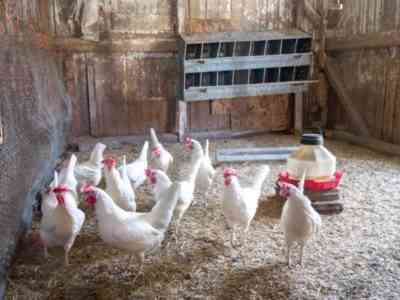
There should be a clean
in the chicken coop
Typhoid pullorosis
Transmitted by airborne droplets, affecting the digestive system of chickens and adults.
Symptoms – immobility, increased thirst, foamy joint , The appearance of shortness of breath and loss of appetite. Crowding, paws tightening and frequent peeping are noted in young animals.
They are treated with two drugs – furazolidone or biomycin.
Salmonellosis (paratyphoid)
Transmitted through eggs , air, food and water. It affects internal organs and is dangerous for humans when eating infected meat and eggs. Symptoms – refusal of food, foamy bowel movements, increased thirst, swelling of the joints, abdomen and cesspools, lacrimation.
Immune serum is introduced to prevent the disease. Treatment is carried out with furazolidone for three weeks. At the same time give streptomycin 10 days. The habitat of sick individuals is subject to disinfection.
Colibacteriosis
This disease is dangerous for both birds and humans. Chickens and young growth are more susceptible.The disease is accompanied by increased thirst, diarrhea, shortness of breath and poor appetite.
Biomycin or terramycin is used in the treatment.
Pasteurellosis
High risk of infection in chickens up to 3 months old. The main vectors of infection are rodents and sick birds.
The first signs are the appearance of foamy discharge from the beak, the bluish color of the crest, increased need for drinking and refusal to feed.
Treatment is effective only at the initial stage of the lesion . Several drugs are used – sulfamethazine, tetracycline 2% or norsulfazole.
Non-infectious diseases
In addition to viral, fungal and bacterial infections, non-infectious diseases can develop in birds.
- Atony of the goiter. The main reason is the accumulation of food, resulting in obstruction. The goiter hardens and becomes saggy. To resolve the problem, it is necessary to drip a few drops of vegetable oil in the beak of the bird, hold a light goiter massage, turn the body over and remove the remnants of food.
- Dyspepsia (indigestion). This disease occurs for two reasons – giving the chickens solid food or soldering with dirty water. Symptoms – hardening of the abdominal region, liquid droppings with pieces of undigested food, fever. To restore health, the bird begins to give food suitable for age, soldered with a weak solution of potassium permanganate or give alkalized water.
- Bronchopneumonia. The reason for the development is frequent overcooling of chickens. In sick individuals, rapid breathing, lack of appetite and abundant mucous discharge from the beak are noted. If no action is taken after 2-3 days, the bird dies. Treatment is with Terramycin or Penicillin.
- Vitaminosis. This often occurs in laying hens, which are contained in the cells and do not receive enough vitamins and minerals in the winter season. As a result of this, the bird loses feather cover, becomes lethargic, reduces weight, it develops conjunctivitis. The solution to this problem is soldering chickens with a vitamin complex.
Parasites
The most common parasites that appear in conditions of dampness, crowding and the presence of a dirty, wet litter:
- Worms. Simple species can be identified in chicken droppings. Tape can live in the body all his life, causing serious illness, even death. To remove parasites, chickens are given anthelmintic drugs.
- Trematode. Signs – swelling and redness of the cloaca, the bird looks disheveled, feathers are dirty, the state is lethargic. Carbon tetrachloride is used for treatment.
- Fluff and nibblers. These parasites eat feathers, leaving bald patches behind them. You can destroy it if you treat the feather cover with Insectol aerosol.
Prevention
Following simple preventive measures will help to prevent infection and infection by various diseases and pests:
- Not in one to keep adult birds and young animals in the chicken coop, since chickens have a weaker immune system, so even a frivolous infection can provoke their death.
- At the first symptoms of sick individuals, they must be moved to a quarantine room.
- The place where infected birds are kept must be thoroughly disinfected.
- Ensure the herd is good and balanced food throughout the year, as well as fresh and clean water.
- Keeping the chicken house clean – timely disposal of feed residues, replacing litter once a year and maintaining stable microclimate indicators.
Owner reviews
Most breeders are happy with the Hercules breed:
- despite the high cost of incubation material and young growth, in a short time it is possible to achieve good meat and egg productivity;
- others like that chickens are easily adaptable to any conditions, have a calm character, it’s greatly facilitates the care of them;
- many breed this breed to get meat and eggs for sale.
